Graham’s Crawfish Snake (Regina grahamii)
Alternate names: Graham’s Crayfish Snake
by Jeff LeClere
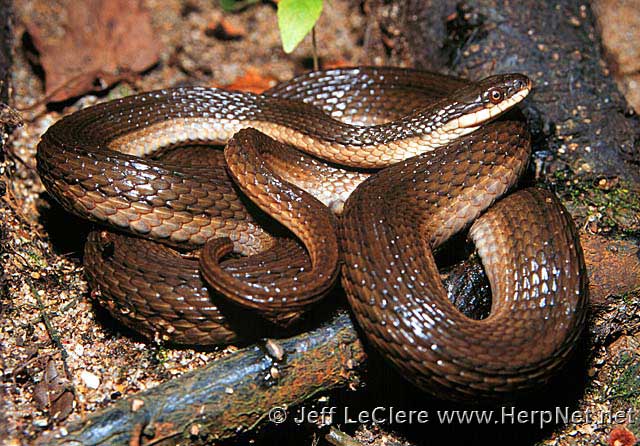
Status
PROTECTED and Species of Greatest Conservation Need. It is illegal to kill or collect this species by law in Iowa.
Description
The Graham’s crawfish snake is a medium-sized Iowa snake measuring 18 – 28 inches (45.7 – 71 cm) in length. Max 47 inches (119.4 cm; Conant and Collins 1998). The ground color is brown or gray. There are no dorsal markings other than sometimes there is a faint light or rust mid dorsal stripe. A prominent light lateral stripe runs lengthwise from the side of the head along the body on both sides. These stripes are located from the ventral scales up to the fourth dorsal scale row and are cream, light yellow, tan or white. There is a thin black pinstripe that zigzags along the edge of the ventral scales. The belly is often the same color as the lateral stripes and is usually unmarked, except for a row of dark dots or stippling down the center in some specimens. The scales are keeled and the anal plate is divided.
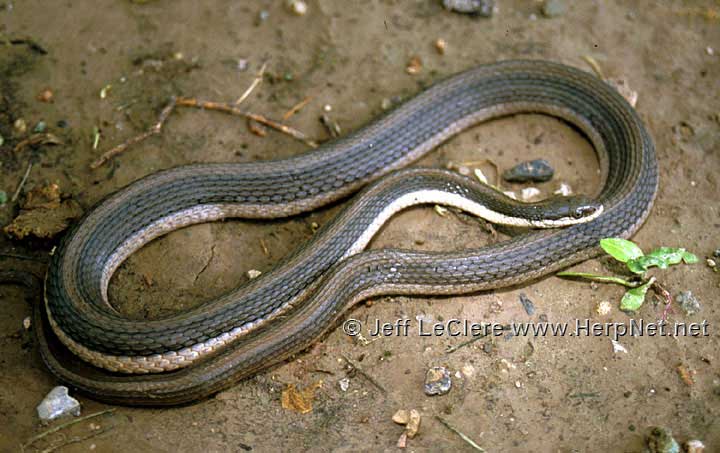
Young Graham’s crawfish snakes are identical to adults and may have brighter light stripes. Guthrie (1930; 1931) reported a melanistic female and litter of 10 Graham’s crawfish snakes from Polk County. Four of the young were dark like the female and six were colored normally. This variation has been observed in additional specimens from Polk County in the late 1980’s (Rouw, personal communication).
Subspecies
There are no subspecies of the Graham’s crawfish snake, Regina grahamii, recognized.
Similar Species
The plains garter snake, common garter snake, and western ribbon snake have bright mid dorsal stripes and single anal plates. The wide light lateral stripe with a dark zigzag pinstripe distinguishes this snake from all other Iowa snakes.
Range
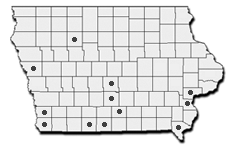
The Graham’s crawfish snake is found across southern and central Iowa with a few scattered records in northern and western Iowa.
Habitat and Habits
Graham’s crawfish snakes are active from April to October. This species requires ponds, sloughs, marshes, floodplains, ditches, and creeks in prairie or woodland habitats, especially with sandy soil. This snake is primarily diurnal in spring and fall and may bask along waterways, but it is the most secretive of all Iowa’s water snakes. It hides under logs, rocks, or in crayfish burrows near the water‘s edge. They may be seen crossing roads between waterways.
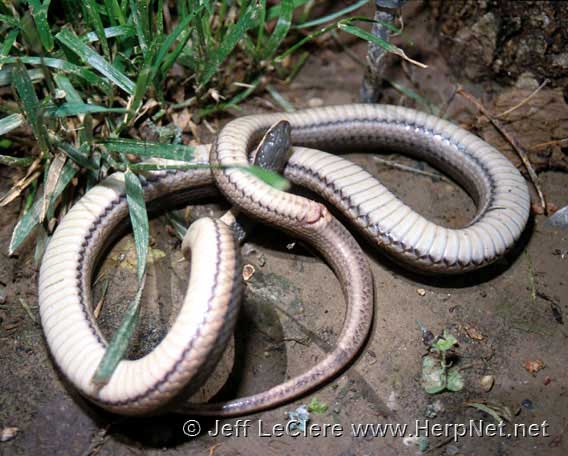
In Louisa County, a gravid female was discovered by peering into crayfish burrows (Monahan, personal communication). Most individuals become active at night during the hot summer months. I have observed specimens on the road at night as early as 1 June in Fremont County. Live crayfish were also found on the same road the previous night.
Unfortunately this species is declining in abundance in most areas. Populations in Bremer and Polk counties have shown marked declines in recent years. In other areas the populations appear to be stable. This species relies heavily upon crayfish and their burrows in most aspects of its natural history. Relatively stable populations along the Mississippi and Missouri River floodplains probably benefit from the annual flooding that temporarily fills tributaries and ditches and allows for wider dispersal of both crayfish and Graham’s crawfish snakes. This species also commonly utilizes the isolated ponds and saturated prairie or woodlands left behind by receding floodwaters. This snake overwinters singly in crayfish burrows (Collins 1993; Johnson 2000; Smith 1961). Graham’s crawfish snakes are not aggressive, even when handled; only one has ever attempted to bite me. However, they may flatten their bodies and release musk.
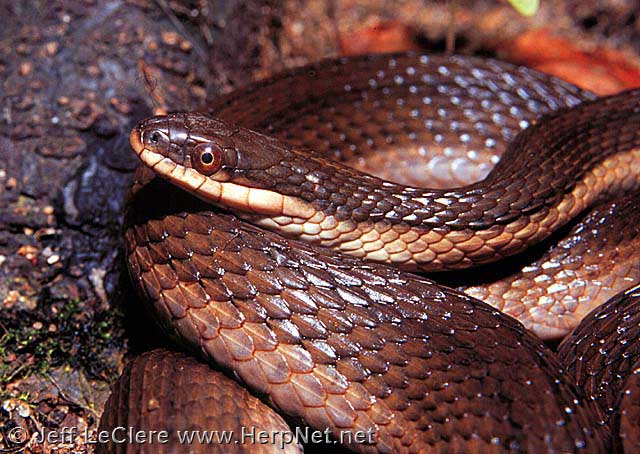
Reproduction
Mating takes place in April and May. Courtship may consist of several males courting and breeding with a single female in the water (Collins 1993). Females give birth from 4 – 35 young anytime from late July into September. On 18 September, I discovered a female giving birth in Louisa County to seven young that ranged from 195 – 215 mm total length. The young were born either in membranes or membranes that ruptured during birthing. All of the neonates I observed shed their skins immediately after birth.
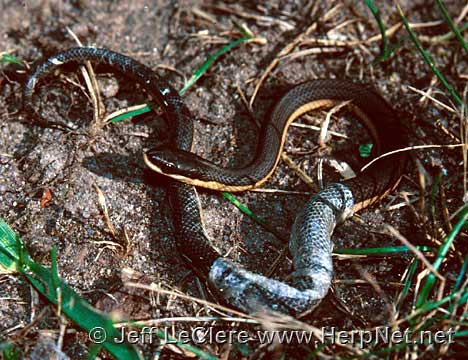
Food
The Graham’s crawfish snake feeds mostly upon recently molted crayfish. Based on a study including Graham’s crawfish snakes from Badger Lake in Monona County, Iowa, crayfish may be ingested head or abdomen first and the size and number of prey can be determined by examining the indigestible gastroliths in the snakes’ stomachs (Godley et al. 1984). Graham’s crawfish snakes are also reported to occasionally eat fish and amphibians, though prey other than crayfish are not believed to be a significant portion of their diet.